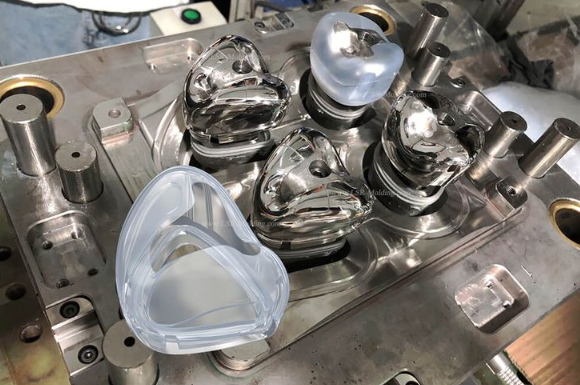
Yes, silicone rubber can be injection molded. Injection molding of silicone rubber, especially Liquid Silicone Rubber (LSR), is a common manufacturing process for producing high-quality, precision parts. The process is widely used due to the excellent properties of silicone rubber, including flexibility, durability, and resistance to extreme temperatures and chemical degradation.
Key Considerations for Injection Molding Silicone Rubber
1. Material Properties
- Thermal Stability: Silicone rubber can withstand a wide range of temperatures, from -55°C to 300°C (-67°F to 572°F), without losing its properties.
- Elasticity: It retains flexibility and elasticity over a broad temperature range.
- Chemical Resistance: Silicone rubber is resistant to many chemicals, making it suitable for various industrial applications.
[elementor-template id=”4330″]
2. Types of Silicone Used
- Liquid Silicone Rubber (LSR): A two-component system that is widely used in injection molding due to its low viscosity and ease of processing.
- High Consistency Rubber (HCR): A more traditional silicone rubber, typically used for compression molding but can also be injection molded with the right equipment.
3. Processing Temperatures
- Mold Temperature: Typically between 150°C and 200°C (302°F to 392°F) for LSR to ensure proper curing.
- Injection Temperature: The injection temperature depends on the specific type of silicone but generally needs to be maintained to facilitate flow and curing.
4. Injection Molding Machine
- Specialized Equipment: Silicone injection molding requires specialized equipment, including cold runners and specialized screws to handle the material’s properties.
- Precision Control: The machine should offer precise control over temperature and injection speed to ensure consistent part quality.
5. Processing Parameters
- Injection Speed: Moderate injection speed is recommended to ensure complete filling of the mold and to avoid air entrapment.
- Curing Time: Adequate curing time is essential for the material to achieve its final properties.
Advantages of Injection Molding Silicone Rubber
1. Design Flexibility
- Complex Geometries: Injection molding allows for the production of complex and intricate part designs.
- Precision Parts: High precision and tight tolerances can be achieved, which are critical for many applications.
2. Material Properties
- Biocompatibility: Silicone rubber is biocompatible, making it suitable for medical and food-grade applications.
- Durability: Silicone parts are durable and can withstand harsh environments, making them suitable for industrial applications.
3. Efficiency
- High Production Rates: Injection molding is suitable for high-volume production, ensuring consistency and repeatability.
- Reduced Waste: The process is efficient with minimal material waste.
[elementor-template id=”4331″]
Applications of Injection Molded Silicone Rubber
1. Medical Devices
- Seals and Gaskets: Used in medical devices for their biocompatibility and flexibility.
- Implants: Silicone’s inert nature makes it suitable for long-term implants.
2. Automotive
- O-rings and Gaskets: Used for sealing applications due to their excellent resistance to temperature extremes and chemicals.
- Electrical Connectors: Used in electrical systems for their insulating properties.
3. Consumer Products
- Keypads and Buttons: Found in electronic devices for their tactile properties and durability.
- Kitchenware: Used in baking molds and utensils for their heat resistance and non-stick properties.
References
- Dow: Offers detailed information on the injection molding process for silicone rubber and its applications.
- SIMTEC Silicone Parts: Provides an overview of the advantages and applications of LSR injection molding.
- Elkem Silicones: Discusses the specific considerations and benefits of using silicone rubber in injection molding.
Injection molding of silicone rubber offers numerous advantages, making it suitable for a wide range of applications across different industries.
Related Conten: Rapid Injection Molding
 DTG Mould Trade Process |
|
| Quote: | According to sample, drawing and specific requirement. |
|---|---|
| Discussion | Mold material, cavity number, price, runner, payment, etc. |
| S/C Signature | Approval for all the items. |
| Advance | Pay 50% by T/T |
| Product Design Checking | We check the product design. If some position is not perfect, or can not be done on the mould, we will send customer the report. |
| Mold Processing | Send report to customer once each week |
| Mold Testing | Send trial samples and try-out report to customer for confirmation |
| Mold Modification | According to customer’s feedback. |
| Balance Settlement | 50% by T/T after the customer approved the trial sample and mould quality. |
| Delivery | Delivery by sea or air. The forwarder can be designated by your side. |
 |
|

